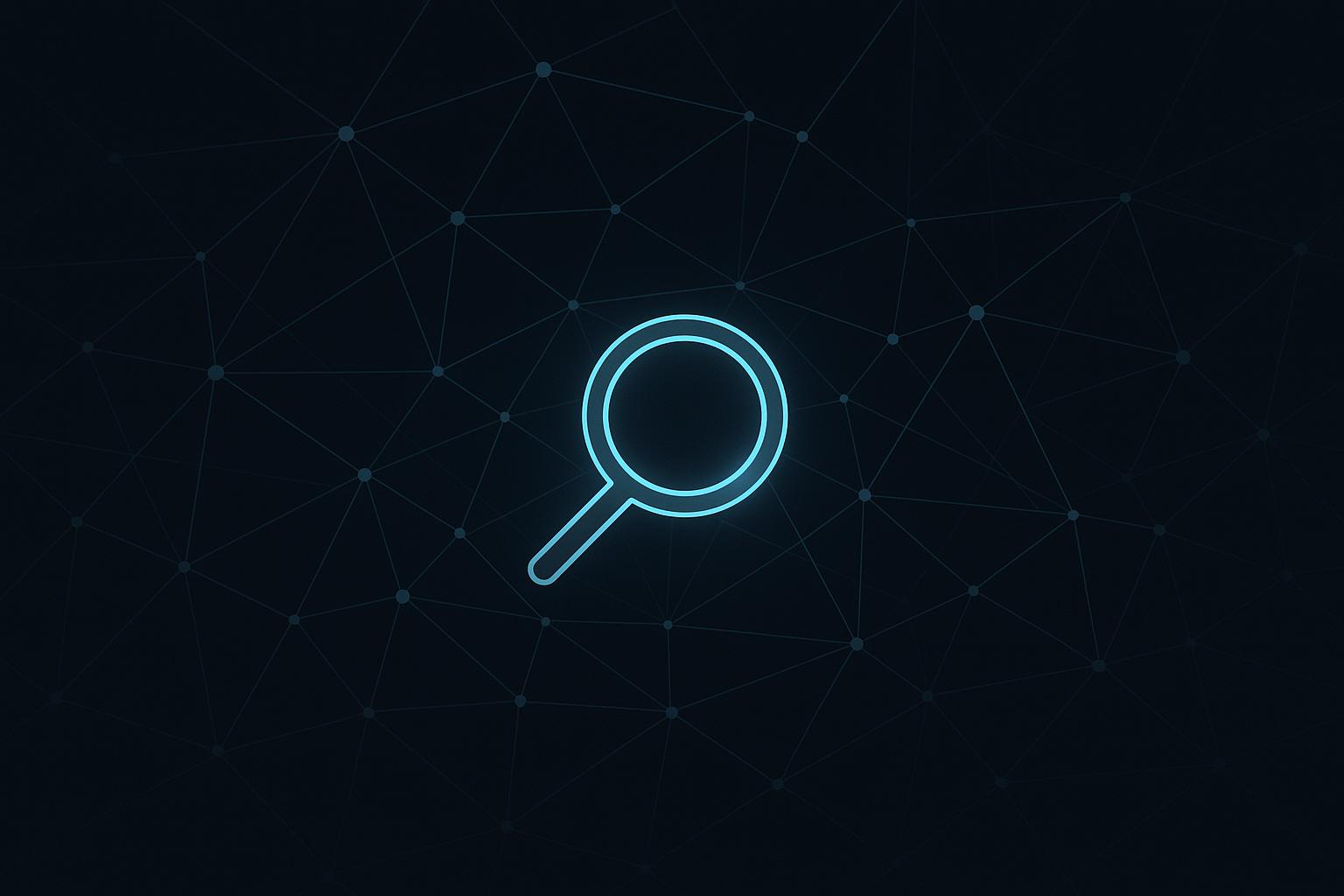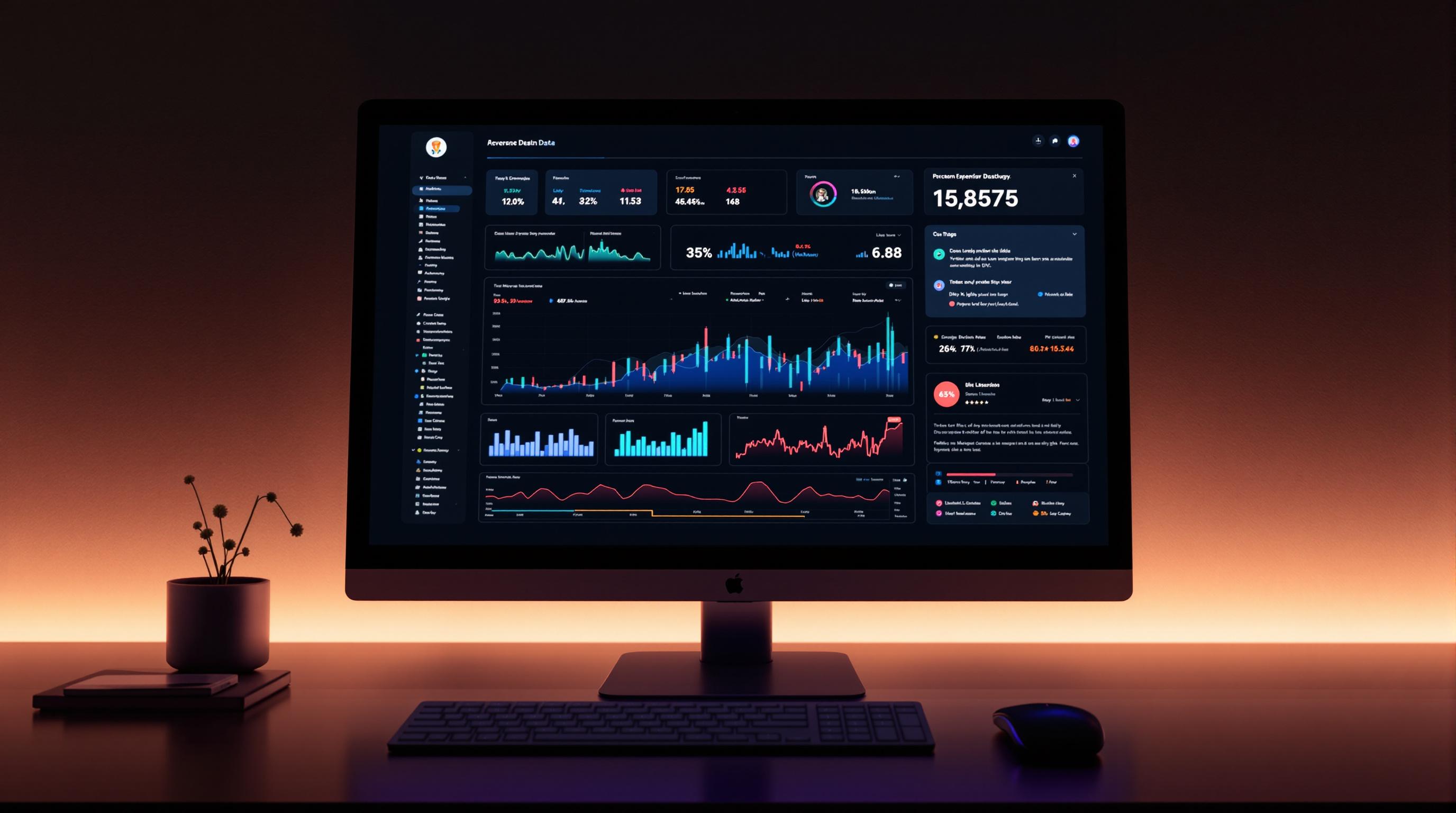Web scraping simplifies data collection for academic research by automating the process of extracting information from websites. It saves time, reduces manual effort, and ensures consistent data for analysis. Here's what you need to know:
- What It Does: Extracts and organizes online data into formats like CSV or databases.
- Why It’s Useful: Speeds up data collection (up to 40x faster), ensures consistency, and supports replicable research.
- Where It’s Used: Healthcare (disease tracking), ecology (climate studies), social sciences (market trends), and more.
- Tools to Start: Use beginner-friendly tools like Chrome extensions or advanced APIs like InstantAPI.ai for large-scale projects.
- Legal & Ethical Practices: Follow website terms, respect privacy, and manage server loads responsibly.
Whether you're a beginner or an expert, web scraping can transform how you gather and analyze data for research. Start small with simple tools, and scale up as your projects grow.
How to scrape search results from Google Scholar
Web Scraping Tools and Setup
Web scraping tools play a crucial role in academic research, offering options for both beginners and advanced users.
Tools for Academic Research
InstantAPI.ai provides versatile solutions tailored for researchers: a Chrome extension for simple, no-code data collection, and a Web Scraping API for more advanced needs. Its AI-driven technology delivers a 99.99%+ success rate in extracting data [1]. These tools are designed to fit seamlessly into research workflows.
Juan from Scalista GmbH shared his experience:
After trying other options, we were won over by the simplicity of InstantAPI.ai's Web Scraping API. It's fast, easy, and allows us to focus on what matters most - our core features.
Initial Setup Guide
Before diving in, it’s important to align your setup with your research goals. Here’s a quick breakdown of what you’ll need:
| Setup Component | Description | Purpose |
|---|---|---|
| Data Requirements | Identify the specific data points needed | Keeps the collection targeted |
| Output Format | Select JSON, CSV, or custom formats | Matches your analysis tools |
| Access Method | Choose between the Chrome extension or API | Fits your technical expertise |
| Computing Resources | Ensure enough storage and processing power | Handles the expected data volume |
Once your needs are clear, you can evaluate which tools best align with your project's scale and complexity.
Tool Selection Guide
When deciding on web scraping tools for academic research, keep these factors in mind:
- Project Scale: For large-scale projects, API access at $5 per 1,000 pages offers unlimited concurrency, making it an efficient choice.
- Technical Requirements: Depending on your project, you might need features like:
- JavaScript rendering
- Proxy management
- CAPTCHA bypass
- Flexible data formatting
- Data Complexity: Research often involves intricate websites. Advanced features like JavaScript rendering and proxies can handle these challenges effectively.
For global datasets, tools with proxy networks and geotargeting capabilities are especially valuable. These features allow researchers to access region-specific data, which is essential for comparative studies. Choose tools that align with both your technical skills and research objectives.
Data Collection Methods
Effective web scraping requires careful planning to gather reliable research data.
Source Verification
Ensuring the reliability of your data starts with verifying your sources. Here's how:
| Verification Aspect | Key Actions | Purpose |
|---|---|---|
| Source Legitimacy | Check business filings, stock reports, news coverage | Confirm credibility |
| Technical Access | Review robots.txt, API requirements, login needs | Ensure compliance with rules |
| Data Quality | Assess metric definitions, collection methods | Maintain data accuracy |
| Historical Context | Use archive.org to track changes | Understand data trends |
Dr. Jiang highlights: "Web data are often prized, as they allow for collecting 'consequential dependent variables from the 'real world'."
Data Organization
Organizing your data properly is key to making it usable for research. For example, Boeing and Waddell's study of 11 million Craigslist rental listings showcased efficient organizational methods. Their process involved:
- Removing duplicate entries
- Filtering out incomplete data
- Validating key values
- Standardizing formats
- Documenting the cleaning process
For housing market research, consider organizing data with parameters like:
- Median rent: $1,145
- Median square footage: 982 sq ft
- Median rent per square foot: $1.11
When dealing with more intricate datasets, modern websites often require advanced strategies.
Modern Website Handling
Today's websites can pose challenges for data collection, such as dynamic content loading and anti-scraping mechanisms. Address these with advanced techniques:
- Add random delays between requests
- Rotate IP addresses using proxy networks
- Use varied user agent strings
- Handle content rendered via JavaScript
For particularly complex scenarios, the following tools can be helpful:
- Selenium: Ideal for interactive websites that need user simulation
- Requests-HTML: Useful for handling AJAX-loaded content
- Scrapy: Perfect for large-scale, systematic data collection
sbb-itb-f2fbbd7
Legal and Ethics Guidelines
Academic researchers must navigate a range of legal and ethical responsibilities when using web scraping for data collection. Being aware of these requirements ensures research integrity and helps avoid legal trouble.
Website Terms and Permissions
Before starting any web scraping project, it's crucial to review the policies and permissions of the targeted website. The 2019 case hiQ Labs Incorporated v. LinkedIn Corporation clarified that scraping publicly available data does not violate the Computer Fraud and Abuse Act (CFAA). However, researchers should still take these steps:
| Requirement | Actions | Purpose |
|---|---|---|
| Terms of Service | Review the website's legal terms | Identify any scraping limits |
| robots.txt | Check /robots.txt at the domain root |
Understand crawling rules |
| User Agent | Include research institution details | Ensure transparency |
| Contact Information | Provide researcher details | Facilitate communication |
These measures lay the groundwork for responsible interactions with web servers.
Server Load Management
To avoid disrupting website operations, researchers should manage server interactions thoughtfully. Here are some best practices:
- Rate Limiting: Space out requests to prevent overwhelming the server.
- Access Timing: Perform scraping during off-peak hours to minimize traffic impact.
- Resource Monitoring: Keep an eye on server response times and adjust scraping activity as needed.
By following these steps, researchers can maintain a positive rapport with data sources while conducting their work.
Data Privacy Protection
Protecting data privacy is a critical part of ethical web scraping. Researchers should only collect the information they absolutely need and secure it properly. Here are some key privacy measures:
| Privacy Measure | Implementation | Benefit |
|---|---|---|
| Data Minimization | Collect only essential information | Reduces privacy risks |
| Secure Storage | Encrypt collected data | Safeguards sensitive details |
| Anonymization | Remove identifying information | Protects individual privacy |
| Access Control | Restrict data access to the research team | Prevents misuse or breaches |
Dr. Jiang emphasizes: "Web data are often prized, as they allow for collecting 'consequential dependent variables from the 'real world'."
Large-Scale Data Collection
Gathering data on a large scale for academic research demands efficient and reliable systems to ensure continuous collection without interruptions.
Multi-Server Scraping
For big research projects, collecting data from multiple sources at the same time is often necessary. Distributed scraping systems can help manage server loads and speed up the process. Here's how to set up multi-server operations:
| Server Configuration | Purpose | Implementation |
|---|---|---|
| Load Balancing | Spread requests evenly | Use proxy rotation and distribute requests |
| Geographic Distribution | Access location-specific data | Deploy servers in various regions |
| Redundancy Systems | Maintain uptime | Set up backup servers and failover protocols |
In addition to spreading out requests, keeping the data up-to-date is just as important.
Automated Updates
To ensure datasets stay current, it's crucial to have systems in place for regular monitoring and updates. This helps keep the collected information accurate and ready for analysis. Key practices include:
- Version control: Use tools like Git to track changes in your scraping scripts and maintain consistency.
- Automated testing and deployment: Ensure your system runs smoothly and that data formats remain consistent.
- Webhooks for real-time updates: Get notified when source data changes to keep your datasets accurate.
Research Tool Integration
Linking the data collected through web scraping with research tools simplifies the workflow from collection to analysis. Modern approaches focus on ensuring a smooth transition of data. Here are some common integration methods:
| Analysis Tool | Integration Method | Data Format |
|---|---|---|
| Python | API calls | JSON/CSV output |
| R | RESTful endpoints | Structured datasets |
| Statistical Software | Automated exports | Formatted tables |
To make the data usable for research, standardize formats - such as dates and numerical values - and organize text data into consistent structures.
When setting up these systems, automation is key, but don’t overlook the importance of maintaining data quality. Regular audits are essential to ensure the reliability and validity of your research findings.
Web Scraping for Researchers: A Quick Recap
Web scraping has become a game-changer for researchers, simplifying the process of collecting and analyzing large datasets. With advancements in automated tools, researchers can now tackle ambitious projects across various fields more efficiently.
Why Web Scraping Matters
Web scraping isn’t just about gathering data - it’s about doing it effectively and accurately. Here’s what it can do for your research:
- Pull structured data from even the most complex websites.
- Convert raw information into formats ready for analysis.
- Keep your data current with automated updates.
- Directly integrate data into your research workflows, saving time and effort.
These features streamline the research process and ensure your data is always ready when you need it.
How to Get Started
Ready to incorporate web scraping into your work? Here’s a simple roadmap:
1. Start Small
Use a Chrome extension for basic data extraction tasks. This hands-on approach is perfect for beginners and helps you grasp the basics without diving into coding.
2. Expand Your Toolkit
As your needs grow, consider API-based solutions. These tools are scalable and affordable, with pricing starting around $5 per 1,000 pages, allowing you to handle larger projects with ease.
3. Organize Your Data
Transform the raw data into structured JSON files for smooth integration into your research workflows. This step ensures consistency and makes your data analysis more efficient.


